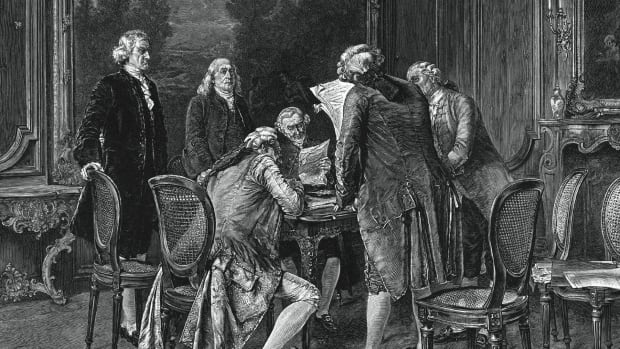The American Revolutionary War of 1812 was an eight-year war fought between the American Continental Army and the British Army, which ended on September 3rd, 1775, signing the Treaty of Paris. This marked American Independence from the Colonial British Rule. Following the independence, the American expansion and subsequent settlement in the Northwestern territories also began. This highly enraged the Native Americans who were invaded by the American colonists. On the other hand, the British established colonies in Canada and were posing a severe threat to the American Navy. After the independence, America flourished in maritime trade as well. There existed an idea to expand the Colonial American rule in Canadian Territories but was opposed by many leaders and politicians.
Background of the War of 1812:

There were various causes for the American War of 1812. The main reason was the expansionism of the Americans, and other serious threats included the problems faced by the United States with regard to their trade. The maritime trade was also highly affected due to the war between the British and the French, as the nations indulged in the war prohibited trade from other allies and other neutral countries. In 1807, the Non-Intercourse act came into action, which laid prohibition for trade in both British and French colonies. This inhibited the import of goods as well and greatly affected the economy of America.
Following the Non-Intercourse act and the economic crisis, Macon’s Bill Number 2 was passed in 1810, which lifted the trade restriction if the French and the British also lifted the bans. Napoleon of France intervened and planned to exclude the United Kingdom by asking America to issue the Non-Intercourse Act with one change. He allowed for all the trade between France, French territories, and the United States.
Also, the policy of Impressment involved Britain’s Royal Navy’s engagement and recruitment of American soldiers without any restriction under the pretext of volunteering. The majority of the American soldiers recruited for the Royal Navy were either deserters or people who forged their identities. There were no proper records of all the volunteers recruited by the Royal Navy, and most of the submitted papers were forged and duplicated content.
American War of 1812:

Often referred to as the Second American War of Independence, the War of 1812 was fought between the American forces and the British-Native American allied forces. The War of 1812 commenced on 18th June 1812 and lasted till 18th February 1815. The joining of the Native Americans and the British angered the Americans. The American War of 1812 facts includes the origin of Uncle Sam (U. S.) which soon became a reference.
The Battle of Tippecanoe in 1811, between the American troops commanded by General Harrison and the Native American forces under Tecumseh and Tenskwatawa, saw the victory of the Americans as they burned down the city of Prophetstown, which was a Native American Confederacy against American settlements.
The Americans were on the verge of declaring war. Still, both the houses, Federalists and the Democratic-Republicans, were a little bit skeptical of the declaration of war on Great Britain. But eventually, after a close margin, Congress declared the war. Following the earlier trade dispute and unaware of the American declaration of war, the British forfeited all the trade restrictions. The British didn’t respond to the Declaration of war by the Americans. This made the Americans enter the Canadian territories under British rule. The Canadian invasion turned out to be a failure for the Americans as they were repelled by the Canadians.
The Entry Of General Hull

The Americans faced various defeats during the course of the war, including the surrender of Fort Detroit by General Hull in the Northwest, which established a Native American and British dominancy, and the failure of General Henry Dearborn to acquire the Northeastern part were significant setbacks during the War of 1812. The American soldiers weren’t fully prepared for a war against a superpower like the British.
Even the attempts to enter via the Niagara River by the American troops under General Stephen Van Rensselaer was unsuccessful, but this resulted in the death of British General Isaac Brock who was the colonial administrator of Canada. Further attempts to reacquire the fort of Detroit also resulted in multiple losses on the American army. In September 1813, Lake Erie was acquired by General Oliver Hazard Perry after a challenging naval encounter between the British and the Americans. By October 1813, the Battle of Thames between the American soldiers and the combined forces of Tecumseh and British troops was a significant victory for the Americans, which resulted in the capture of Southwestern Canadian territory.
In the Southern theater, the success of the Americans against the Red Sticks was significant. In the summer of 1814, the Battle of Chippewa and the nearby wars, including the Battle of Lundy’s Lane, marked the victory of the United States. The Battle of Lundy’s Lane was considered the bloodiest and the deadliest war of the War of 1812, owing to a number of casualties.
When the war of 1812 between the French and the British faded due to the demise of Napoleon, the British focused more on the American War of 1812. The British forces from overseas attempted and succeeded in capturing the US Capitol, Washington DC, and even burned the White House. In September 1814, the Battle of Baltimore and the defendant of Fort McHenry, between the Americans under General Samuel Smith and the British forces under Major General Robert Ross was a successful encounter for the Americans, which later inspired the American National anthem.
Treaty Of Ghent

On November 24th, 1814, the Treaty of Ghent was signed that ratified the war from February 18th, which marked the end of the American War of 1812. The Treaty of Ghent established the status quo ante bellum, which meant “the situation as it existed before the war.” Following the end of the war, the British repealed the Naval trade with the Americans, and the US economy began to flourish. The Canadian territories remained untouched by the Americans.
The result of the war was considered a victory for the British. But the Native Americans lost the war without any further support from the British. They couldn’t prevent the expansion of the United States in their Northwestern territories, which eventually led to the decline of the tribes of the Native Americans. The overall losses were very high on all three sides, with over 1,500 deaths due to war, 10,000 deaths due to diseases, and over 4,000 wounded casualties.
